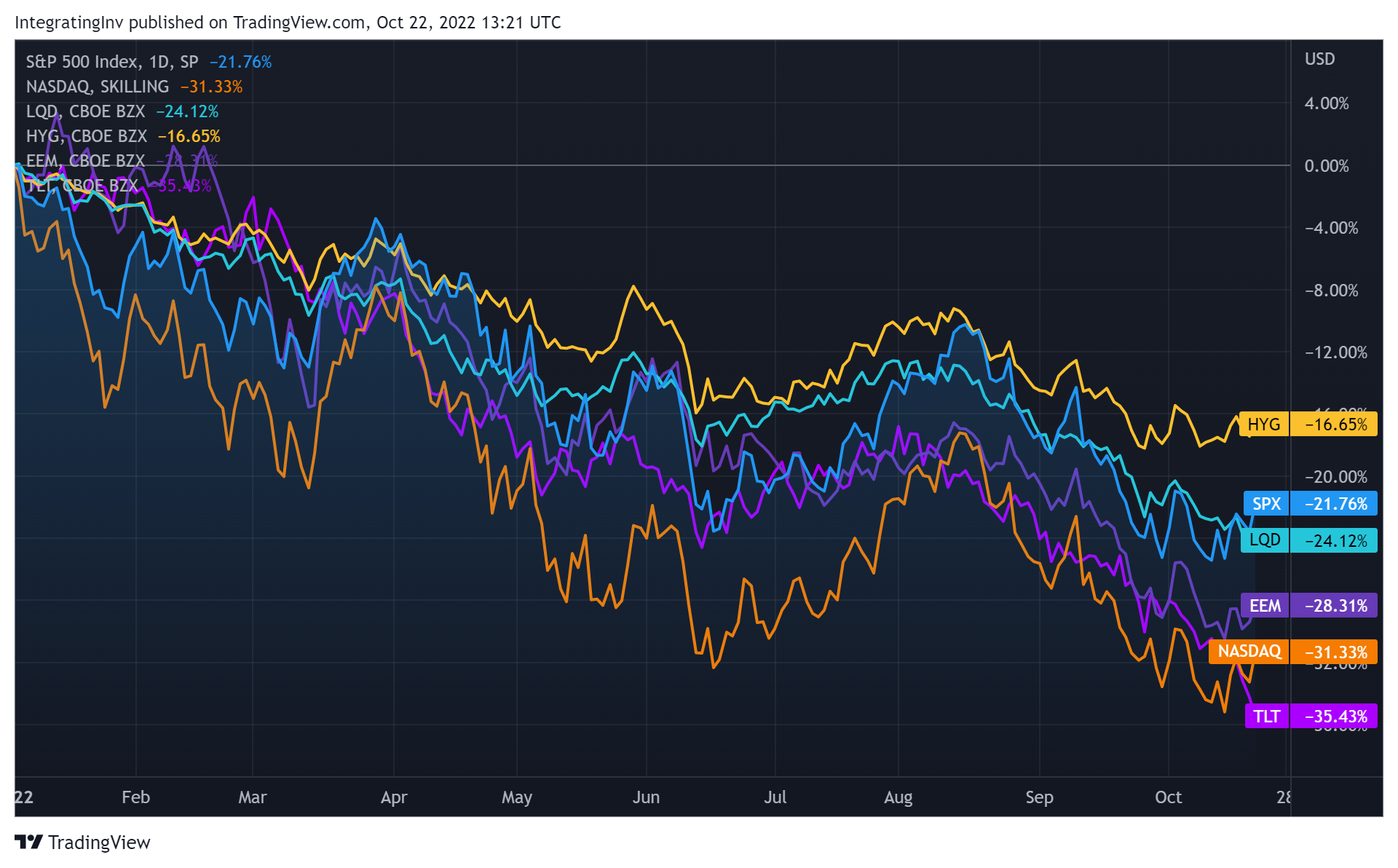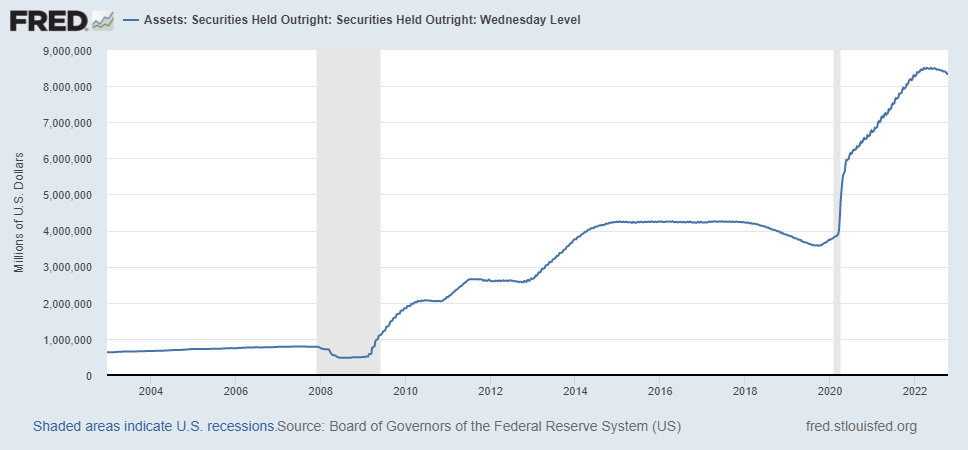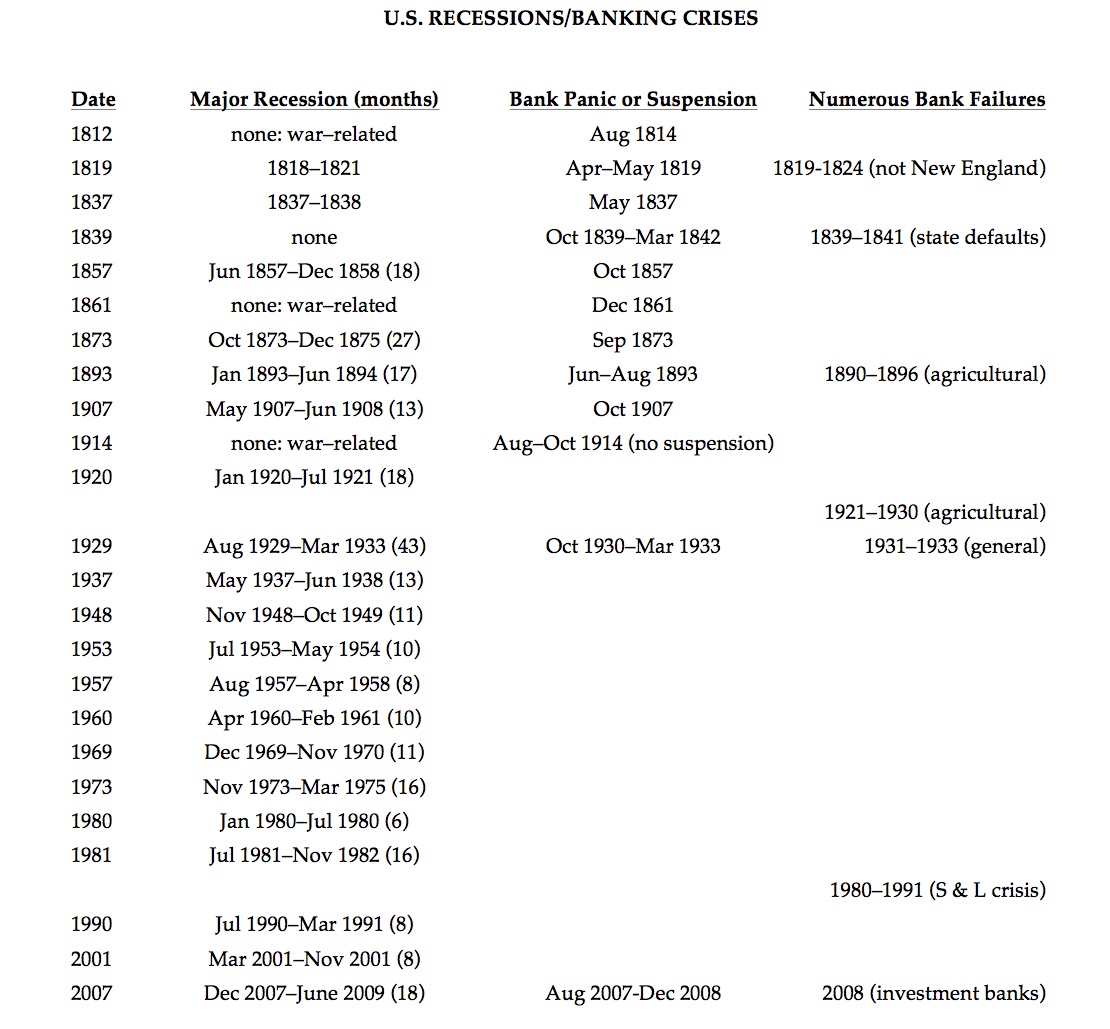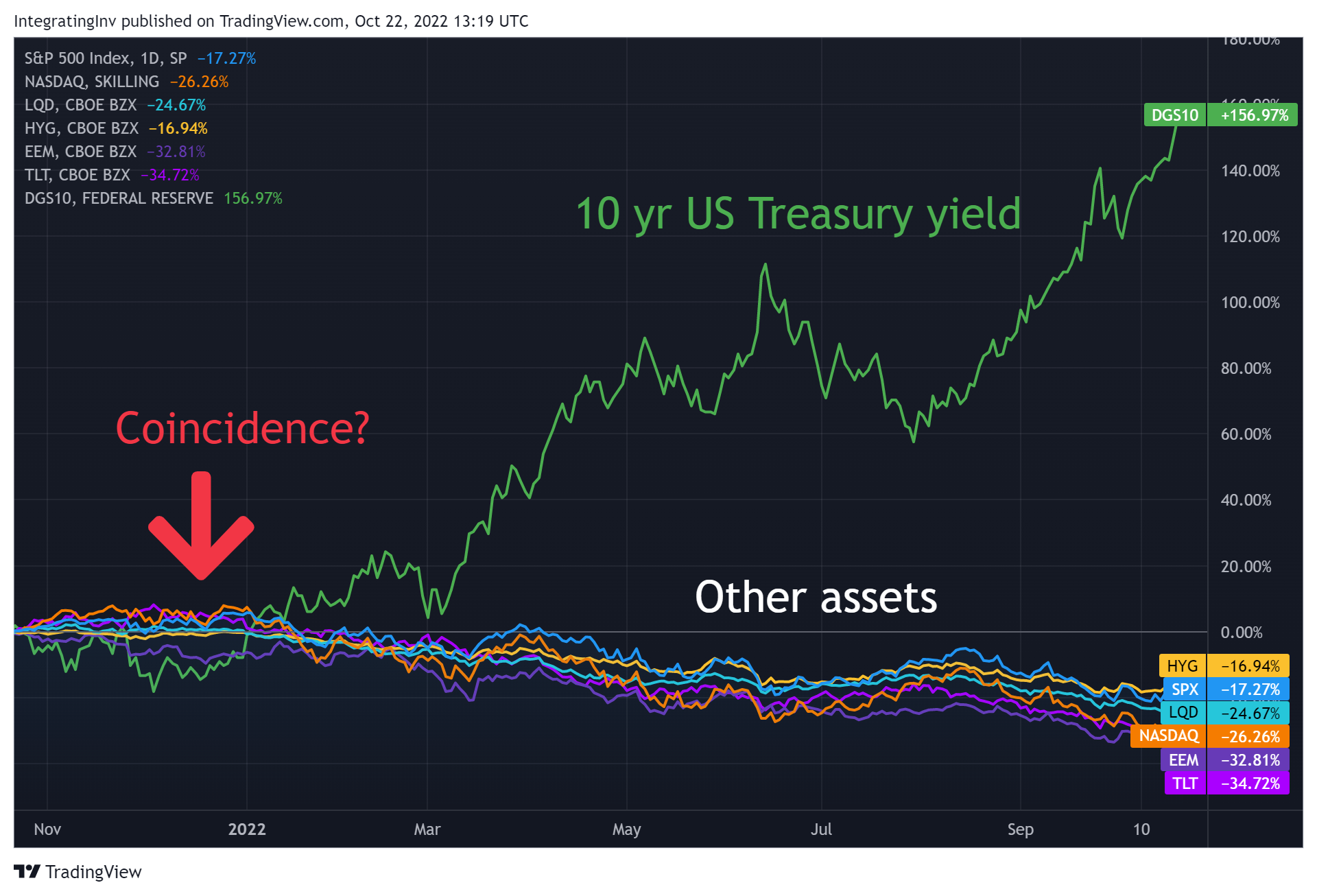Markets Reteaching Centralization’s Dangers
2022.10.24 19:47
[ad_1]
Here we go again. Investment markets are melting down once more. Stocks, corporate bonds, emerging markets and government bonds are having awful years. Even commodities, like , , and are down year-to-date. There have been few places to hide, which might perplex investors. Yet, such widespread destruction is a clue. It’s how nascent centralization risks manifest. Markets are preaching.

Popular asset classes have performed poorly this year. Source: TradingView
In my view, today’s selloffs stem from two sources, both are related to centralization. The first (and larger) is rising interest rates. Whatever their primary cause—“inflation,” unwinding carry trades or pro-cyclical volatility targeting strategies—the Fed’s tightening cycle seems to be part of the problem. The second is concentrated geopolitical risks. Today’s changing conditions, in my opinion, exposed the markets’ dormant fragilities built up over decades. After all, centralization breeds instability.
Centralization Creates Instability
Centralization is a critical concept for analyzing system stability. Centralization describes an environment with a high concentration of essential factors. It’s a broad concept that typically applies to decision-making processes. For example, a nation with one governing body could be classified as centralized as opposed to one with many, competing local tribes. Similarly, a computer network built around a single server is centralized, while decentralized ones divide tasks among many.
All systems—ecological, biological, computational, economical and financial—can be assessed through the lens of centralization with respect to their efficiency and stability. The greater the centralization, the more efficient they will be. Their concentrations allow for quicker and optimized behaviors. However, this comes at a cost. Instability also increases as changes have large impacts. The opposite also holds true. Decentralization reduces efficiency but adds system stability due to diversified relationships among many more factors. Thus, there are tradeoffs. Centralized systems’ concentrations are benefits but also create risks that decentralized ones diversify away, but at a cost.
Say, for example, we’re analyzing two widget manufacturers. One is centralized, producing a single product in a single plant. The other has decentralized operations (or is diversified in financial analyst speak). The centralized widget maker’s profitability would likely exceed the decentralized one’s since it can optimize operations for its single product and location. The centralized producer benefits from scale. It could negotiate better supplier and freight contracts to lower costs, invest in specialized equipment tuned to its singular task, and run its manufacturing lines longer and without interruption. All improve profitability.
The decentralized producer, to the contrary, has more inputs to balance. It has a greater number of materials to purchase and in smaller quantities; it ships to a more disparate customer base and from multiple plant locations, and; it must periodically interrupt and modify its manufacturing processes in order to make its different products. All of these cost time and money which manifest as lower profitability.
While the centralized widget maker might look like the better of the two, its profitability comes at a cost. It’s more vulnerable to operational volatility compared with its decentralized peer. Any disruption in its optimized business—a late supplier delivery, a truck shortage for transporting finished goods, a breakdown of equipment, or a reduction in its widget demand—could spell doom. The decentralized producer, on the other hand, would be more resilient to any one disruption. Diversification mitigates disaster.
Centralization is neither good nor bad on its own. Rather, it’s contextual to the system being analyzed. In many areas centralization is desirable, like in communication. A common language facilitates beneficial trade among people. For other systems where stability is paramount, like the financial system, decentralization is best.
The Fed’s Destabilizing Centralization
The Fed a been a centralizing force in markets since its founding in 1913. First created to alleviate the devastating liquidity demands that plagued late-19th and early-20th century American banks, the Fed’s influence has since grown dramatically. It no longer acts as the lender of last resort envisioned (banks fear the optics that accessing its Discount Window might create). Rather, the Fed directly intervenes in investment markets today. It’s primarily concerned with financial market stability.
The Fed first forayed into markets to manage the federal funds rate (FFR). The FFR is actually a market rate determined by trading commercial banks. Via its Open Market Operations (OMO), the Fed buys and sells short-term government securities in order to manipulate the FFR into the policy range. Its trading incentivizes banks to lend at rates they otherwise would not (via arbitrage).
Following the GFC, the Fed expanded its OMO to include Quantitative Easing and again during the COVID pandemic. With these policies, the Fed significantly increased the quantities and types of securities it purchased. No longer constrained to short-term government securities, the Fed bought long-dated U.S. government bonds, mortgage-backed securities and even corporate bonds.
 Long-term Fed Asset Purchases Chart.
Long-term Fed Asset Purchases Chart.
The Fed purchased nearly $8 trillion of securities in the open markets since the GFC.
Each OMO policy tries to counter-cyclically balance market actions. Said differently, they attempt to overwhelm the many and decentralized actions of investors, centralizing those decisions with the Fed.
Coincidence Or Centralization?
Unfortunately, the Fed’s stabilizing actions are illusionary. They cannot change the underlying realities to which investors are reacting. The Fed only alters its incentives schemes. Its large size herds investors into similar trades. Thus, when the Fed changes policy—like it has this year—large capital pools remobilize, which can upend seemingly tranquil prices. Rather than fortifying markets, the Fed weakens them.
 U.S. Recessions And Banking Crises.
U.S. Recessions And Banking Crises.
A tally of recessions, bank panics and bank failures reveals that “[the] widespread belief among economists, historians and journalists that the Federal Reserve [created in 1913] was an essential, major improvement appears to be no more than unreflective faith in government economic management, with little foundation in the historical evidence.” Source: Alt-m.org
Market correlations seem high these days. Furthermore, these moves look related to U.S treasury yields. Asset values are tumbling as rates rise. To be sure, the Fed’s policies are just a piece of the pie. They are selling short-dated securities to raise the FFR and reducing its balance sheet holdings alongside other investors. However, this is precisely the danger—the herd is moving again, in unison. It’s no coincidence; it’s the centralization.

In my opinion, it’s no coincidence that many assets are falling as interest rates rise. Source: TradingView
Globalization Done Wrong
Financial systems aren’t the only victims of increased centralization. Investment markets are revealing other vulnerabilities, too, resulting, in part, from globalization. Specifically, concentrated exposures to China and Russia surfaced.
Globalization can decentralize various businesses and systems. Foreign markets, suppliers and currencies can diversify and de-risk operations and investment portfolios, fortifying them against changing conditions.
However, globalization can also optimize efficiency. Cheaper Chinese goods and labor were increasingly integrated into supply chains in order to boost productivity, output, profits and margins for some. Similarly, convenient and low-cost Russian oil masked the need to develop alternative energy sources and supplies. These previously hidden geopolitical risks have now been exposed. Those with concentrated risks are suffering, while the diversified are less affected.
Centralized Thinking Creates Unstable Markets
Unfortunately, there’s no easy way out of our current predicament. The weak investment markets are, in my opinion, reflecting the greater centralization that has occurred over the decades. While efficiency has increased in economies and markets, so too has their vulnerability to such shocks as rising interest rates, higher market volatility and nascent geopolitical risks.
The only cure for centralization’s afflictions is to decentralize (with deregulation, not crypto). Yet, culturally, we are not always open to this. The business community might lead by diversifying optimized supply chains in order to enhance resiliency. After all, some’s existence depends on it.
Macro-minded investors and policy-makers, though, remain oblivious. They stubbornly hold that central banks stabilize otherwise unstable financial systems. Such ignorance is inexcusable today. The plethora of data across time, history and applications show that decentralization alone creates resiliency.
Until we learn, markets will continue to teach the tradeoffs between centralization and stability. The more the Fed intervenes, the more it weakens the financial system, no matter how many bonds it buys. The same behaviors will only produce the same results. To think differently is insane.
[ad_2]
Source link








